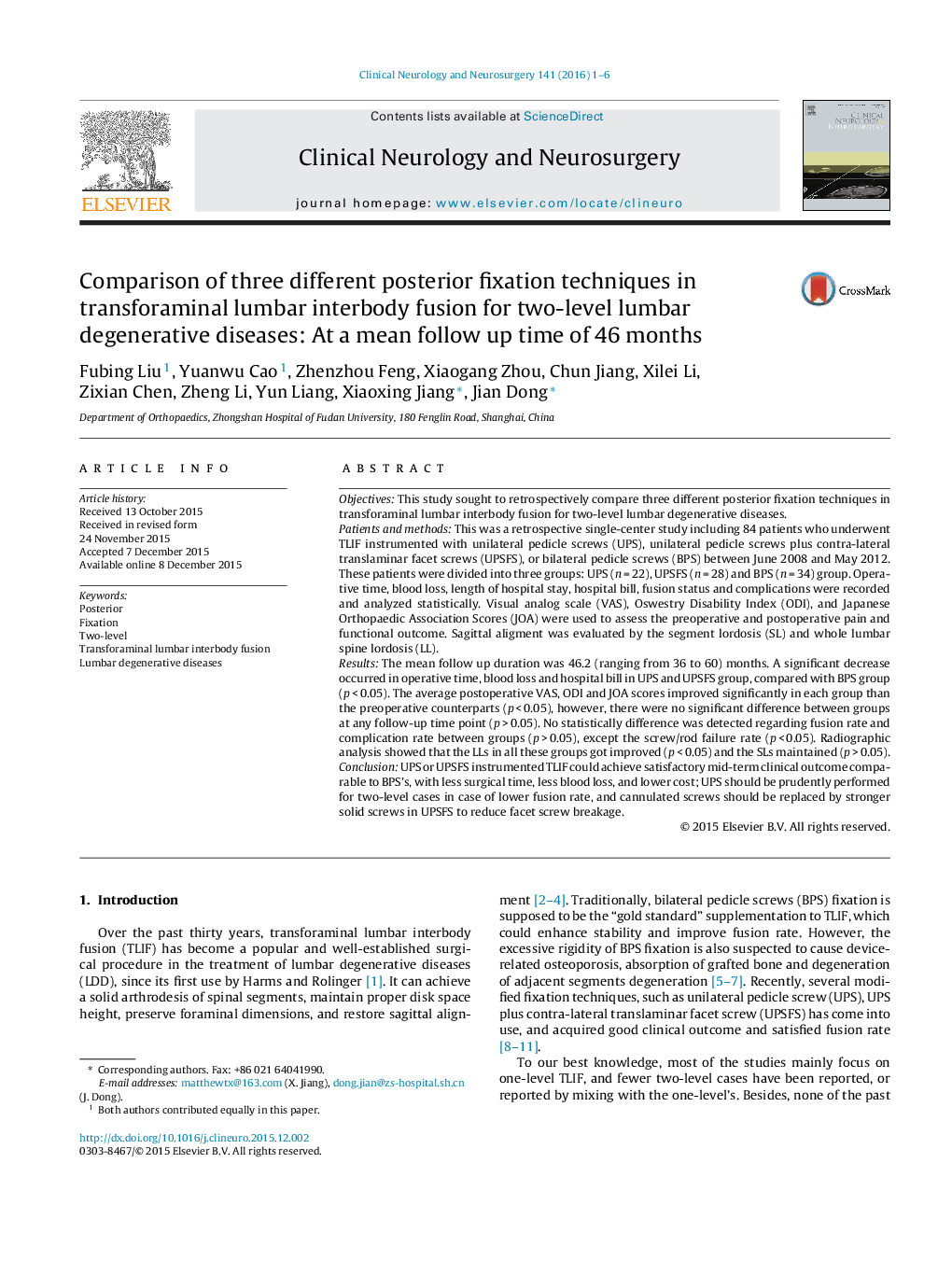| کد مقاله | کد نشریه | سال انتشار | مقاله انگلیسی | نسخه تمام متن |
|---|---|---|---|---|
| 3039570 | 1579681 | 2016 | 6 صفحه PDF | دانلود رایگان |
• We are the first to investigate three fixation techniques in two-level lumbar cases.
• UPS/UPSFS could achieve satisfactory mid-term clinical outcome comparable to BPS.
• UPS instrumented TLIF should be prudently performed for two-level cases.
• Cannulated screws should be replaced by solid screws in UPSFS instrumented TLIF.
ObjectivesThis study sought to retrospectively compare three different posterior fixation techniques in transforaminal lumbar interbody fusion for two-level lumbar degenerative diseases.Patients and methodsThis was a retrospective single-center study including 84 patients who underwent TLIF instrumented with unilateral pedicle screws (UPS), unilateral pedicle screws plus contra-lateral translaminar facet screws (UPSFS), or bilateral pedicle screws (BPS) between June 2008 and May 2012. These patients were divided into three groups: UPS (n = 22), UPSFS (n = 28) and BPS (n = 34) group. Operative time, blood loss, length of hospital stay, hospital bill, fusion status and complications were recorded and analyzed statistically. Visual analog scale (VAS), Oswestry Disability Index (ODI), and Japanese Orthopaedic Association Scores (JOA) were used to assess the preoperative and postoperative pain and functional outcome. Sagittal aligment was evaluated by the segment lordosis (SL) and whole lumbar spine lordosis (LL).ResultsThe mean follow up duration was 46.2 (ranging from 36 to 60) months. A significant decrease occurred in operative time, blood loss and hospital bill in UPS and UPSFS group, compared with BPS group (p < 0.05). The average postoperative VAS, ODI and JOA scores improved significantly in each group than the preoperative counterparts (p < 0.05), however, there were no significant difference between groups at any follow-up time point (p > 0.05). No statistically difference was detected regarding fusion rate and complication rate between groups (p > 0.05), except the screw/rod failure rate (p < 0.05). Radiographic analysis showed that the LLs in all these groups got improved (p < 0.05) and the SLs maintained (p > 0.05).ConclusionUPS or UPSFS instrumented TLIF could achieve satisfactory mid-term clinical outcome comparable to BPS’s, with less surgical time, less blood loss, and lower cost; UPS should be prudently performed for two-level cases in case of lower fusion rate, and cannulated screws should be replaced by stronger solid screws in UPSFS to reduce facet screw breakage.
Journal: Clinical Neurology and Neurosurgery - Volume 141, February 2016, Pages 1–6
